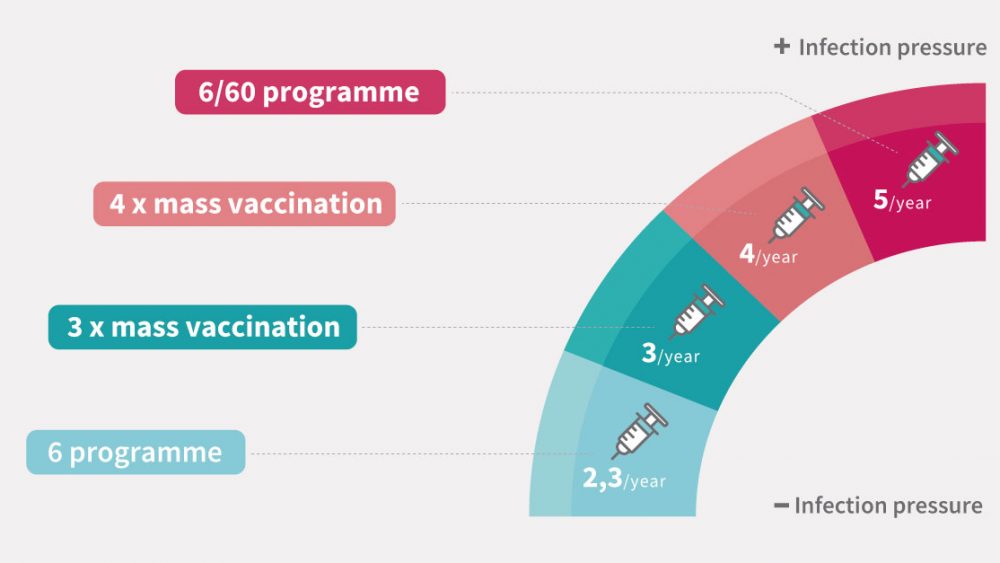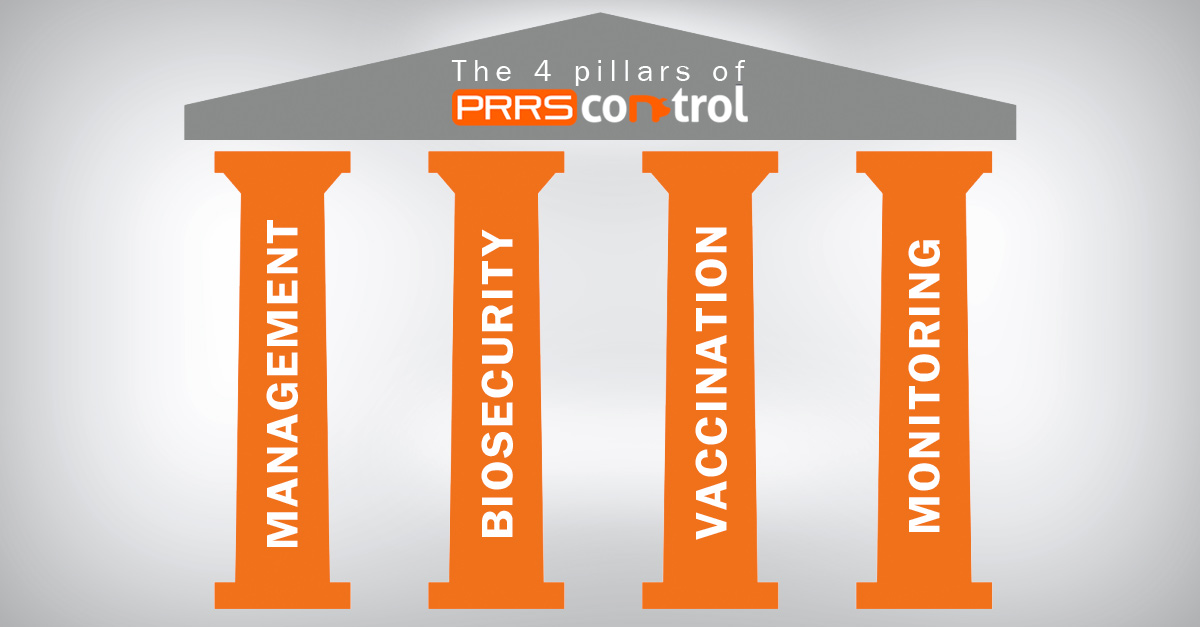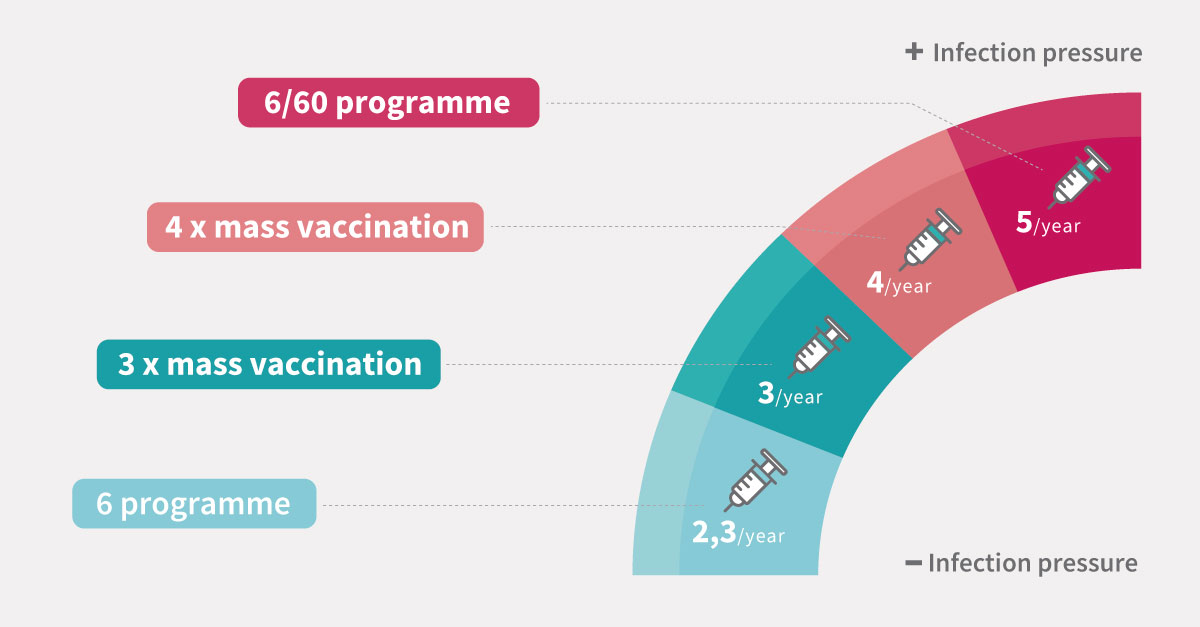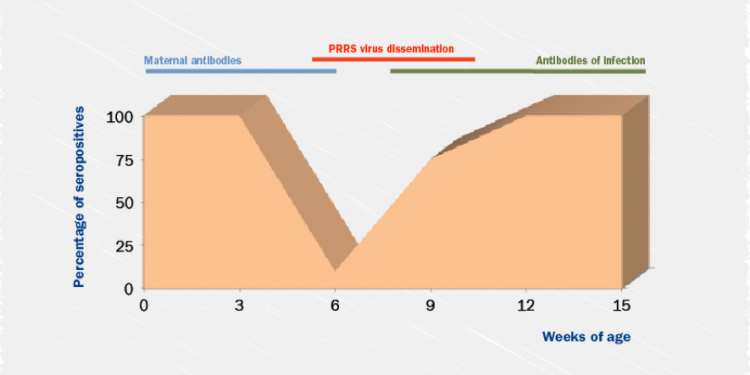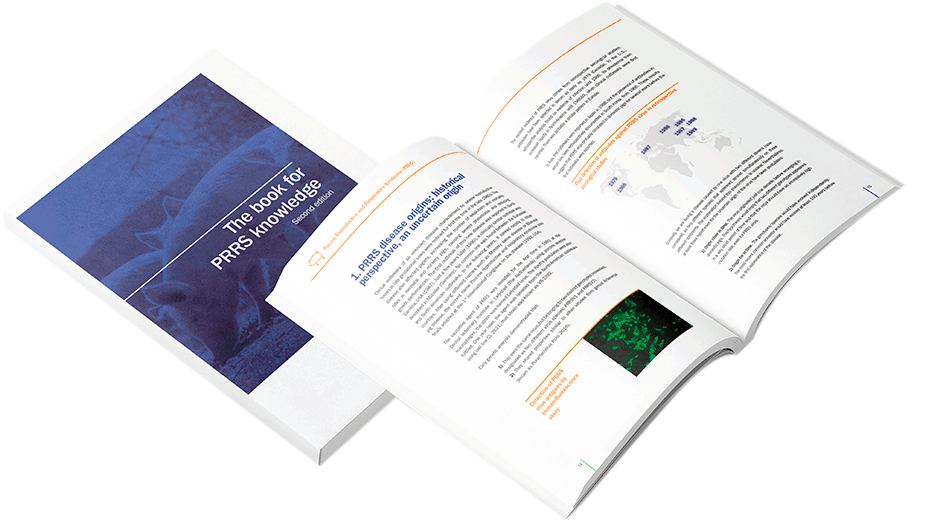The PRRS (Porcine Reproductive and Respiratory Syndrome) is at the centre of every conversation between farmers and swine veterinarians in the most important pig producing countries worldwide because of the significant productive and economic losses caused on pig farms due to reproductive failure in breeding females and respiratory distress in pigs of different ages (Rossow KD, 1994).
Owing to the fact that it is a disease with important aspects still to be clarified, the success of disease control depends on a combination of different strategies.
This approach includes health management, monitoring with diagnostics, biosecurity evaluation and vaccination playing a fundamental role.
The importance of PRRS monitoring
Monitoring allows us to use the most common diagnostic techniques for PRRS so that we can be informed of the status of the animals at all times, know at what age they are infected and how the virus is transmitted within the farm.
The lack of systematic monitoring of the PRRSV leads to irregular and non-standardised information about the status of farms, making it even more difficult to understand how the virus flows within the farm and how to control it over time.
Although several PRRS diagnostic techniques are available in most European countries at regional or national level, epidemiological knowledge on the disease is limited because PRRS virus monitoring is normally used at individual farm level and with different criteria in different regions/farms.
Vaccination as a tool to achieve PRRS stabilisation
Ideally, the best situation would be to keep the farm negative for PRRS. However, important pig-producing countries with high density production areas are positive for PRRS, making elimination of the disease almost impossible.
In this situation, control is the most feasible choice when talking about PRRS and the objective is to live with the enemy.
The main objectives of PRRS control are firstly, herd stabilisation; keeping the breeding herd PRRS-stable, minimising the risk of reinfection and avoiding the entrance of new strains into the farm and secondly, minimising productive losses.
In a study carried out in Spain (Torrents et al. 2019), it was estimated that a PRRS-positive stable farm produces 26.2 weaned piglets/week/1,000 sows more compared to a PRRS-unstable farm.
In other words, the impact of PRRS instability is 1.36 weaned piglets/sow/year.
Commercial vaccines offer partial virological and clinical protection since they cannot provide complete and universal protection.
So, although vaccination does not necessarily provide full protection, it is useful as a means of PRRS control to reduce the impact of the disease.
The use of modified live vaccines (MLV) to stabilise the breeding herd is a widespread practice to achieve stabilisation.
On the other hand, in its respiratory phase, PRRS mainly affects piglets during the nursery and fattening periods, altering average daily gain (ADG), mortality rate, feed conversion rate (FCR) and antibiotic consumption in pigs.
Economic losses caused by PRRS in growing animals are triggered because of its association with secondary pathogens such as swine influenza, M. Hyopneumoniae, A. pleuropneumoniae and Haemophilus parasuis, etc.
SIP consultants (a Spanish company specialising in measuring the economic cost of swine diseases) estimated that following an outbreak, the cost of the disease can reach up to € 12.75 per pig in growing pigs.
There are huge differences between countries in terms of vaccination, although there is a clear upward trend that confirms piglet vaccination as a complementary tool for the control of PRRS. Piglet vaccination aims to fulfil the following objectives:
-
- Herd immunisation: If only breeding females are vaccinated, then part of the population of the farm is not well immunised. Therefore, vaccination of piglets provides whole herd immunisation.
- Reduction of PRRS virus circulation: When vaccinating piglets, the number of susceptible animals and, consequently, the risk of virus recirculation, is reduced.
- Improvement of performance of nursery and fattening periods: PRRS affects productivity in the growing period due to its respiratory clinical disease. Following vaccination, performance is improved.
- Reduction of economic losses: By means of vaccination, the clinical impact of the disease is reduced and consequently, also the economic losses.
Guidelines for piglet vaccination
To maximise the benefit of piglet vaccination, it is important to bear in mind that development of immunity after vaccination requires at least 3 weeks.
Moreover, maternally-derived antibodies delivered by colostrum can interfere with the vaccine.
Furthermore, vaccination does not have a therapeutic effect, so vaccination of viraemic piglets should be reviewed.
In this situation, the first objective is to stabilise the breeding herd and then, once the percentage of viraemic piglets is low, piglet vaccination can be considered again, figure 3.
BIBLIOGRAPHY:
-
-
- 1. Miranda, J. et al.; June 2015. Vaccination with UNISTRAIN® PRRS in piglets reduces viraemia and excretion of PRRSV after a heterologous challenge with a Spanish strain. International PRRS Congress. Ghent, Belgium.
- 2. Linhares DC. et al.; 2014. Comparison of time to PRRSv-stability and production losses between two exposure programs to control PRRSv in sow herds. Prev Vet Med. 1;116(1-2):111-9. doi: 10.1016/j.prevetmed.2014.05.010
-
HIPRA © All rights reserved

